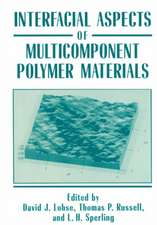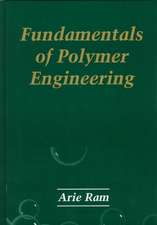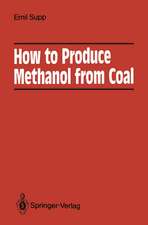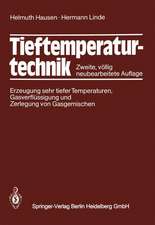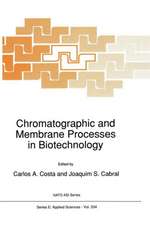The Mechanical Properties of Electrolytic Deposits
Autor A. T. Vagramyanen Limba Engleză Paperback – 26 feb 2012
Preț: 382.95 lei
Nou
Puncte Express: 574
Preț estimativ în valută:
73.30€ • 76.23$ • 61.42£
73.30€ • 76.23$ • 61.42£
Carte tipărită la comandă
Livrare economică 13-27 martie
Preluare comenzi: 021 569.72.76
Specificații
ISBN-13: 9781468415445
ISBN-10: 1468415441
Pagini: 124
Ilustrații: XII, 108 p.
Dimensiuni: 210 x 279 x 7 mm
Greutate: 0.3 kg
Ediția:Softcover reprint of the original 1st ed. 1962
Editura: Springer Us
Colecția Springer
Locul publicării:New York, NY, United States
ISBN-10: 1468415441
Pagini: 124
Ilustrații: XII, 108 p.
Dimensiuni: 210 x 279 x 7 mm
Greutate: 0.3 kg
Ediția:Softcover reprint of the original 1st ed. 1962
Editura: Springer Us
Colecția Springer
Locul publicării:New York, NY, United States
Public țintă
ResearchCuprins
I. Certain Aspects of the Electrocrystallization of Metals.- II. The Hydrogenation of Metals.- The Adsorption of Hydrogen and Other Gases on Metals.- Gas Diffusion in Metals.- The Effect of Temperature.- The Effect of Pressure.- The Effect of the Surface State.- The Effect of Alloying Substances.- The Effect of Deposit Structure.- Real Crystals and the Mechanism of Gas Diffusion through Metals.- The Solubility of Hydrogen in Metals.- III. Methods of Studying the Hydrogenation of Electrolytic Deposits.- The Method of Vacuum Heating.- The Rheometer Method.- The Molten Metal Method.- The Method of Deformation of the Metallic Cathode.- IV. The Effect of Various Factors on the Hydrogenation of the Metallic Deposit.- The Effect of the Nature of the Metal.- The Effect of Current Density.- The Effect of Temperature.- The Effect of the pH of the Electrolyte.- The Effect of the Structure of the Metal.- V. The Rate of Evolution of Hydrogen and the Mechanism of Its Occlusion in the Deposit.- VI. The Effect of Hydrogenation on the Overvoltage for Metal Deposition.- VII. The Adsorption of Surface-Active Substances in Electrodeposition.- The Adsorption of Surface-Active Substances in the Electrodeposition of Silver from Nitrate Solutions.- The Adsorption of Alcohols in the Electrodeposition of Zinc.- The Effect of the Conditions of Electrolysis and the Nature of the Surface-Active Substance on the Rate of Adsorption of the Latter on the Electrode Surface.- VIII. Methods for Measuring and Evaluating Internal Stresses.- Method of Deformation of a Glass Bulb (Mills Method).- The Method of Cathode Bending.- The Spiral Contractometer of Brenner and Senderoff.- The Strain Gauge Method.- The X-Ray Method of Determining Internal Stress.- IX. The Effect of Various Factors on the Internal Stress.- The Effect of the Nature of the Deposited Metal.- The Effect of the Nature and State of the Base.- The Variation in Internal Stress after Cutting Off the Current.- The Variation of the Internal Stress with the Deposit Depth.- The Effect of Current Density.- The Effect of Temperature.- The Effect of the Acidity of the Electrolyte.- The Effect of Foreign Salts.- The Effect of Surface-Active Substances.- The Effect of Fluctuating Current.- The Effect of a Reversing Current.- The Effect of an Intermittent Current.- X. The Origin of the Internal Stress.- The Alteration in Lattice Parameters.- The Alteration in the Distance between Crystals.- The Alteration in Crystal Dimensions.- The Formation of Chemical Compounds.- XI. The Internal Stress and Porosity of the Electrolytic Deposit.- The Effect of the Base and the Preliminary Treatment.- The Effect of the Structure and Depth of the Deposit.- The Effect of Current Density.- The Effect of Surface-Active Substances.- The Effect of an Alternating or Reversing Current on the Internal Stress and Porosity.- The Effect of Temperature and Electrolyte Composition.- Canal Pores.- XII. Adhesion and the Internal Stress in the Electrolytic Deposit.- XIII. The Mechanical Properties of the Electrolytic Deposit.- The Hardness of the Electrolytic Deposit.- The Effect of Current Density.- The Effect of Temperature.- The Effect of the Electrolyte Composition.- The Effect of Alloying Metals.- The Effect of Surface-Active Substances.- The Effect of Alternating and Reversing Currents.- The Effect of Ultrasonic Waves.- The Cause of Hardness.- XIV. The Relation between Internal Stress, Hardness, and Elasticity.- XV. The Effect of Electrochemical Treatment on Brittleness.- The Effect of Preliminary Treatment on the Brittleness of a Metal.- The Effect of Current Density.- The Effect of the Composition of the Solution.- The Effect of the Time of Polarization.- The Effect of the Time of Storage.- The Effect of Electrolytic Deposit on Brittleness.- XVI. The Effect of the Electrolytic Deposit on Fatigue, Strength, and Durability.


